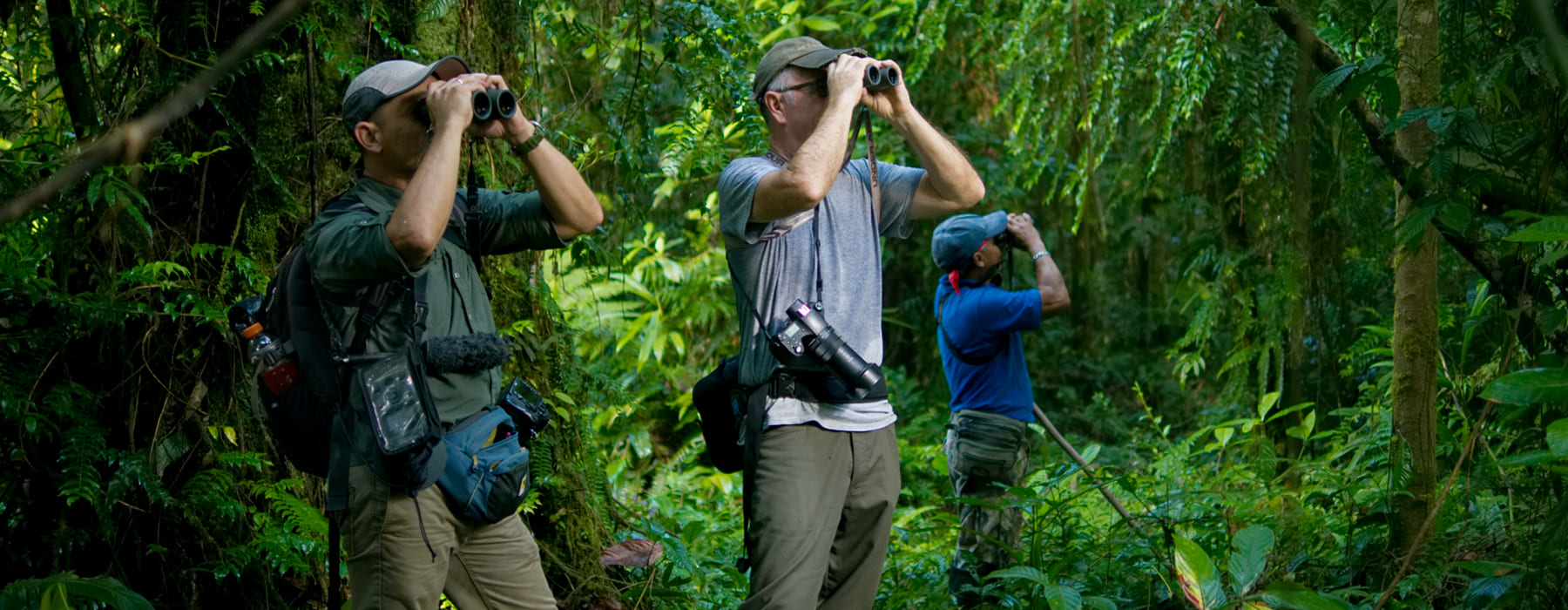
If you are passionate about nature, bird watching and getting lost on endless routes in the Amazon rainforest, you need the best binoculars for bird watching. With them you can enjoy distant and inaccessible landscapes and you can observe animals without them noticing your presence. Binoculars are a very important instrument in long-distance bird watching.
Going bird watching is one of the first things you start doing when you start observing nature, birds are colorful and they are everywhere. For a reason it is one of the most widespread hobbies in the world. Binoculars or binoculars are an invaluable aid for the practice of observing and identifying wild birds, they allow us to zoom in on their image to be able to appreciate details that are sometimes impossible to observe with the eyes and that are usually key to determining the species. Binoculars are a basic element for practicing bird watching. To choose your binoculars you must consider the characteristics of the places where you will normally do your bird watching excursions.
Every fan of bird watching in nature knows that trying to hit the target among the conifers is more difficult than finding a needle in a haystack. For that, there are certain tips that can help with that task. Having the best binoculars for bird watching will make a difference in finding the location of birds or not. However, the characteristics of the lenses will depend on personal taste.
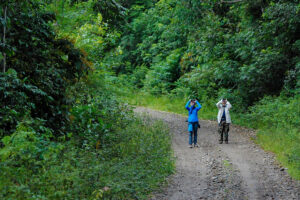
There are mainly 2 types of binoculars, the Porro and the Roof:
The Porro or M binoculars: They have an optical design with glasses that increases the linear image, they are generally cheaper to manufacture, but they are larger and heavier than the Roof.
Roof or H-shaped binoculars: They have an optical design with lenses that magnify the image linearly. They are generally more expensive, but lighter and smaller than Porro binoculars. In addition, they usually have a more prepared environmental seal.
If you have a tight budget, and you will not take the binoculars out to extreme conditions of humidity or heavy rain, Porro-type binoculars are recommended, since for not much money you can get very bright and very good quality optics. On the other hand, if you travel a lot, want something resistant to rain and adverse weather conditions, and are thinking about making a good investment, Roof-type binoculars are the way to go.
Binocular brands
Brands with a track record and variety of models for all budgets, some models of impressive quality and generally good quality/price ratio: Bushnell, Canon, Eagle Optics, Fujinon, Kowa, Nikon, Pentax, Vanguard and Vortex.
Premium brands: Leica, Swarovski and Zeiss.
It is worth mentioning that there are many other brands with very good models, which were not mentioned here so as not to lengthen the list.
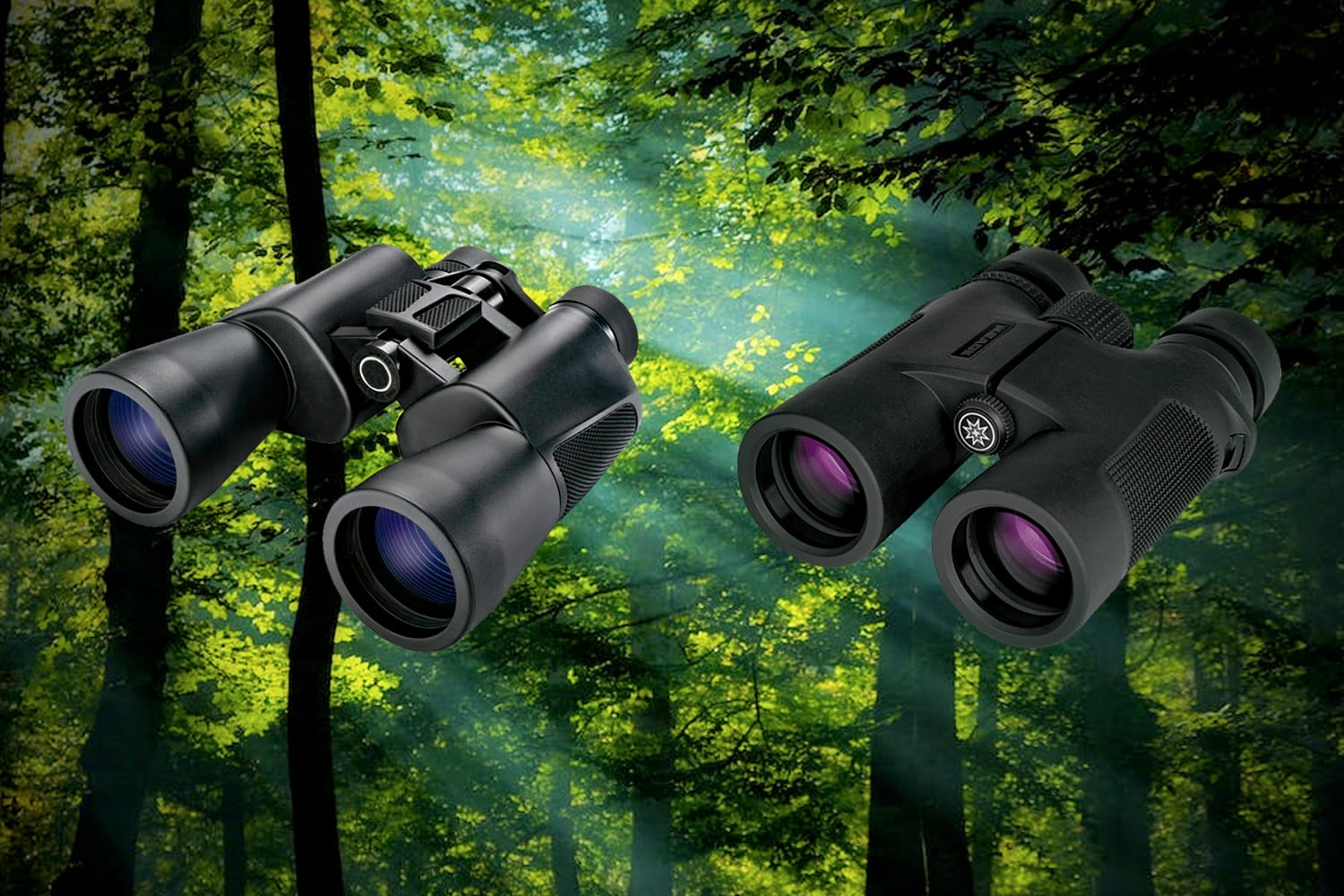
Binoculars come with an endless list of details that we need to handle, here are some of them:
The field of view: In a pair of binoculars or binoculars it is usually measured by the width of the area that can be seen. This mainly depends on the increase. An 8x pair will generally have a wider field of view than a 10x pair. Among binoculars with the same magnification, the size of the objective lens also plays a role in determining the field of view.
Magnification: Refers to how much larger the target appears when viewed through binoculars with the naked eye. It is usually represented by a number, such as 8x, 10x, or 12x, which indicates how much closer the target appears when viewed through them. Higher magnification can help you see details in objects that are far away, but it can also lead to shakier, poorer-quality images.
Weight and portability: The size and weight of the binoculars are key factors, those that are too heavy or large can be tiring to carry, especially if you go on long hikes. The ideal weight of binoculars for observation, going out into the field, for example, to watch birds should be less than 900 grams.
Eye relief: This is the distance between the eyepiece and your eyes when using binoculars. It is an essential factor to consider, especially for people who wear glasses or who need more space for greater comfort. Generally, an eye distance of 14 to 16 mm is considered suitable for people who wear glasses. For those who do not use them, a distance of 10-12 mm may be adequate.
Image stabilization: This is a feature that can help minimize shaky images caused by hand movements. This feature is particularly useful when observing birds in flight for higher magnification binoculars. While image stabilization can be a useful feature, it’s important to note that it can add weight.
Types of glass: The most common are BAK4 and BK7, the latter are cheaper to produce and have a lower refractive index, that is, they are more prone to losing light in internal reflections, so it is always recommended as much as possible. Of those possible to choose binoculars with BAK4 glass.
Field of View/Field of View/FOV: It is the angle of view that binoculars give us, it is usually indicated as follows: 115m@1000m, which means that you can see 115 of the area when focusing at 1000m away. It is recommended to choose binoculars with the widest possible field of view, which will allow us to find and follow birds more easily.
Angle of View: It is similar to the above, but measured in angles. The previous measurement would be an approximate angle of 6.5º.
Minimum focusing distance: This value tells us how close we can focus with the binoculars. This can be crucial if the uses we want to give the binocular include spotting insects, reptiles or flowers.
Eye relief: It is the optimal distance to the rear element at which you will be able to see 100% of the image. This distance is important if you wear glasses, since an eye relief greater than 17 mm will allow you to see the complete image with glasses on.
Sealing: As we mentioned previously, Roof-type binoculars usually have a higher quality environmental sealing, since they are usually filled with a special low-refraction gas, which if leaked will cause a loss of the binocular’s optical qualities. Generally binoculars are weather proof, this means that they withstand rain and dust; However, not all of them are water proof, that is, resistant to submersion in water.
It is not crucial, but it is important to take this into consideration when buying binoculars, to understand what care we must take with them. In any case, it is recommended not to expose them too much to sea water, sea breeze or sand, since the Small particles can scratch the glass or get into moving areas and alter its proper functioning.

The binoculars have 2 numbers, for example 8×42, 10×50, 7×35. The first number corresponds to the image magnification and the second to the diameter of the front lens.
The magnification is usually between the ranges of 7 and 12x in most binoculars, and the diameter usually varies between 25 and 56 mm. For birds, magnifications of 8 and 10x are usually recommended:
7x and 8x magnification binoculars: They are recommended for close-range training locations, such as forests and jungles, with sub-optical light conditions. They are also often recommended as a first binocular, since it has less magnification, you can stabilize the image more easily and obtain more detail of the birds. In addition, they generally have a wider field of vision, which allows us to find birds in adverse conditions and follow them more easily.
10x magnification binoculars: They are recommended for long-distance viewing locations, such as wetlands and lagoons, with optical lighting conditions. By getting closer, the trepidation (involuntary movement) is greater and it is difficult to obtain greater details of the birds.
Zooming in closer than 10x is not recommended, as the image tends to shake too much, making it more difficult to obtain details of the birds. However, there are binoculars with image stabilization, which allow you to control shake and recover details.
There are also binoculars with variable magnification or “zoom”, which allow you to change the magnification with a wheel, they are usually indicated with numbers like 7-12×50 (Magnification between 7 and 12, with 50mm diameter), they are not entirely recommended since they usually suffer from optical compromises to deliver the zoom.
Front element diameter
The diameter will indicate the amount of light that enters the optics, the larger the diameter, the more light enters the binocular. This is vitally important in low light conditions, since in full sun the differences are not noticeable to our eyes. Since diameter is a physical measurement, binoculars with a larger diameter are larger than those with a smaller diameter.
The most common diameters for Porro (M) type binoculars are 25 and 50mm, the smallest being 17mm and the largest being the not insignificant figure of 150mm, the latter for astronomical use. The 25mm ones are a great option for those looking for compact binoculars that perform well in daylight, while the 50mm option is usually recommended for those looking for a “complete” binocular that provides good performance in good light and in daylight. sub optimal.
For Roof (H) type binoculars, the most common diameters are 25 and 42mm, with the smallest being 15mm and the largest being 70mm, again, for astronomical use. The 25mm ones are once again a great option for compact binoculars, this time, even smaller than the porro type. They are highly valued among travelers, backpackers and cyclists for their light weight and small size in the suitcase. Meanwhile, 42mm are the “standard size” used by the large percentage of binoculars for daily use.
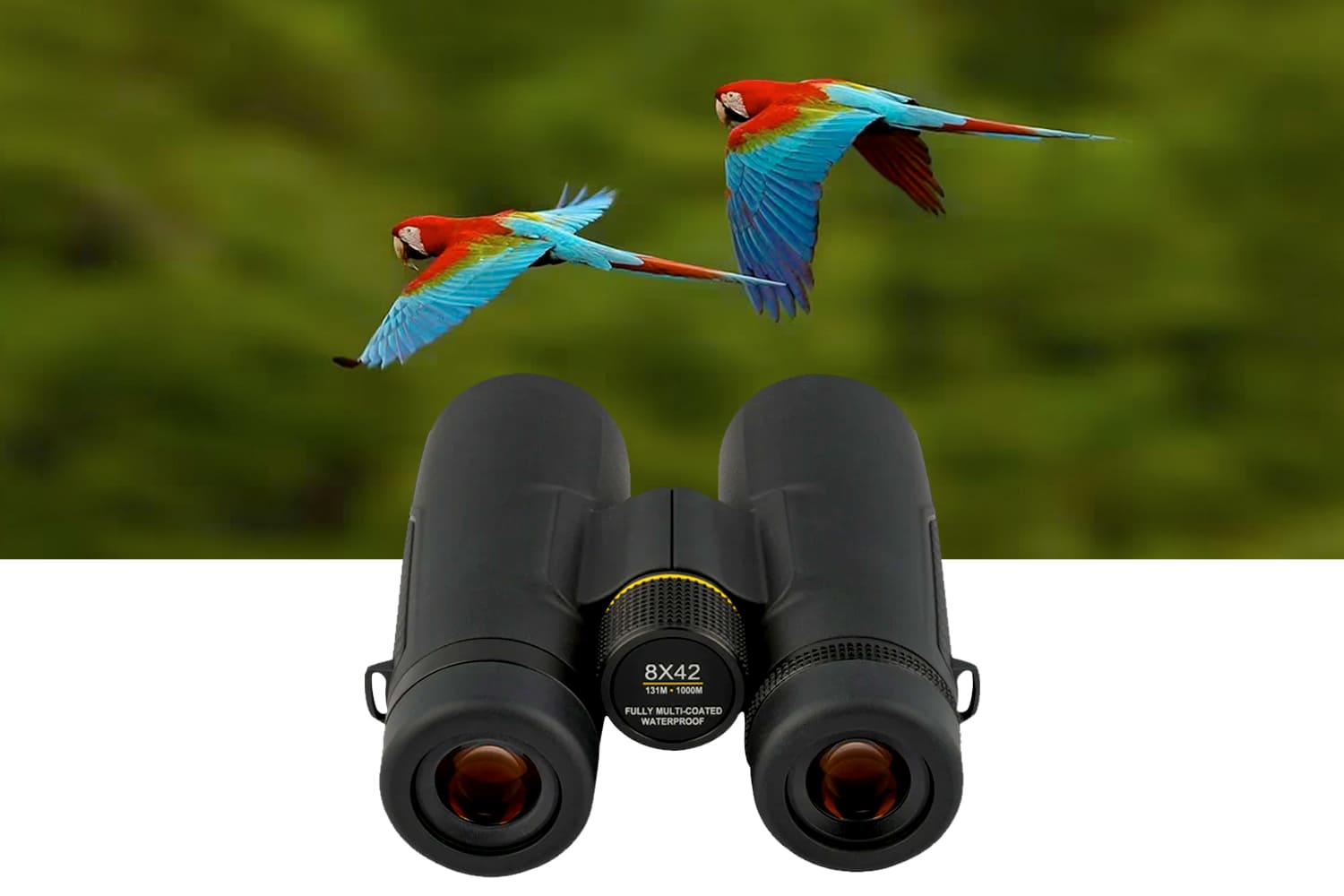
The Slokey 10×42 are very cheap binoculars. But don’t let their price fool you, they are built with every detail in mind and they guarantee very good quality images.
• Magnification and aperture: 10×42
• Field of vision: 6.5º
• Field of view at 1000 m: 105 m
• Exit pupil: 4.2 mm
• Eye relief: 18 mm
• Prisms: Bak-4 roof
• Lenses: Fully Multi-Coated
• Weight: 530g
• Water and dust resistant
It also includes:
• Mobile phone adapter.
• Neoprene strap.
• Carrying case.
Strong points: They are super complete and include all the extras you need for a very low price.
Weak Point: With 10x magnification you will better appreciate the details of the objects you observe but the vibrations will be a little more noticeable than with 8x.

All Vortex series of binoculars are specialized for use in nature, but the Vortex DiamondBack stands out for having the best quality-price ratio of the entire brand. They are not expensive and have the maximum specialization for seeing birds and observing nature.
• Magnification and aperture: 10×42
• Field of vision: 6.3º
• Field of view at 1000 m: 110 m
• Close focus: 1.5 m
• Eye relief: 15 mm
• Prism: BaK-4 roof
• Lenses: HD and Fully Multi-Coated
• Weight: 607g
• Resistant to water and fog
They have it all:
• Optical quality.
• Endurance.
• Easy to use.
Strengths: It has everything you need to use them in nature.
Weak point: The field of view is somewhat narrower than other binoculars on this list.

If you are looking for the best possible binoculars for bird watching, this is my recommendation. A model of the highest quality with all the necessary features for the most demanding users.
• Prism: BaK4 ceiling
• Optical treatment: Fully Multi Coated
• Weight (g): 686
• Protection against water: Waterproof
• Protection against fogging: Yes
• Field of view at 1000m (m): 130
• Eye distance (mm): 17.5
• Minimum focusing distance (m): 1.8
• Diopter compensation: Yes
Other sizes available:
• Vortex Razor HD 10×42: If you prioritize greater range in exchange for a smaller field of view and less bright images, opt for the 10×42.
Strong points: Virtually perfect binoculars, all its features are premium.
Weak point: High cost, quality is paid for. If you want the best binoculars for bird watching, you will have to make a good investment.
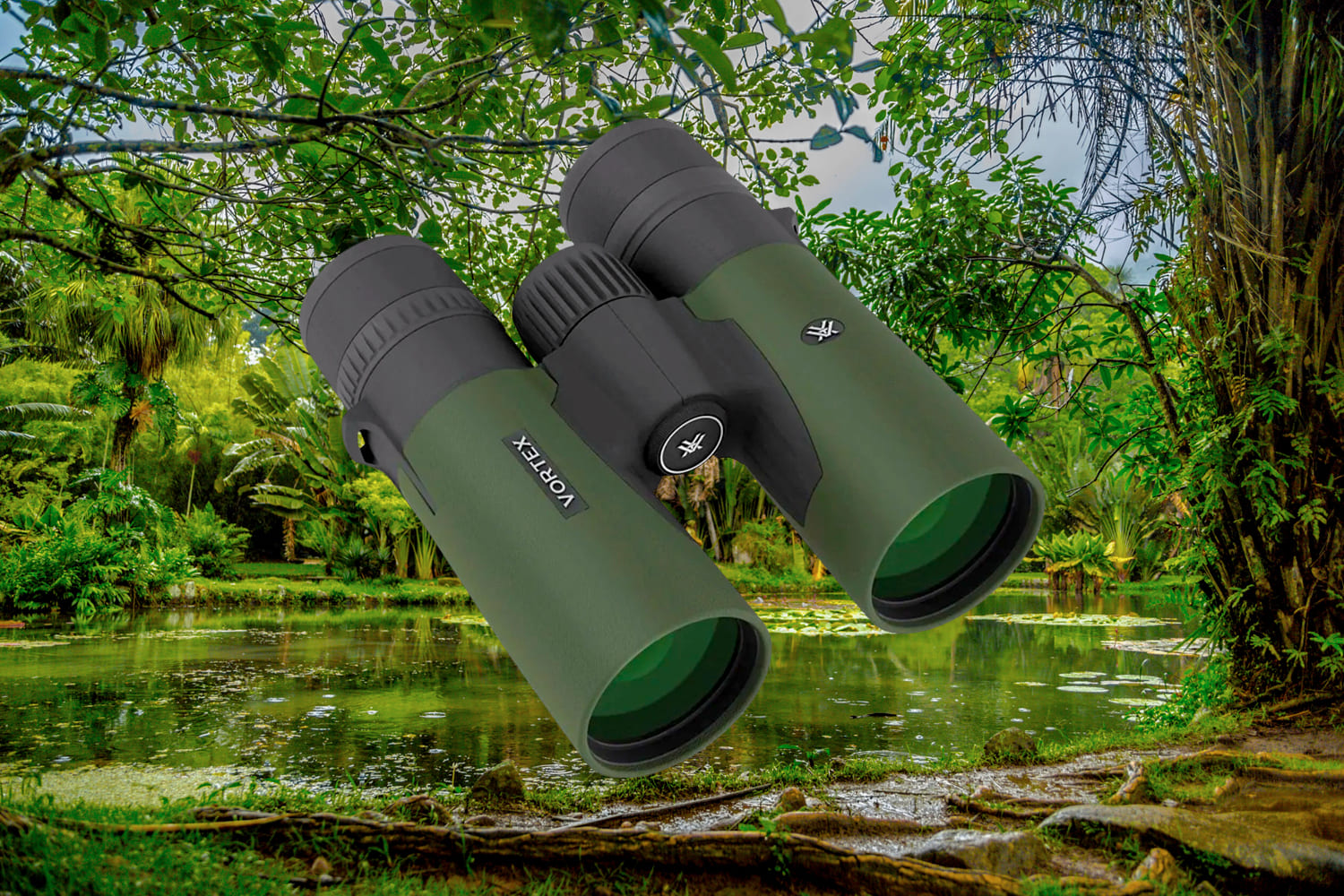
If you are an experienced user, you will not fail with these binoculars, perfect quality for bird watching. Excellent quality mid-range Nikon binoculars.
• Prism: BaK4 ceiling
• Optical treatment: Fully Multi Coated
• Weight (g): 630
• Protection against water: Waterproof
• Protection against fogging: Yes
• Field of view at 1000m (m): 112
• Eye distance (mm): 19.5
• Minimum focusing distance (m): 2.5
• Diopter compensation range: Yes
Strengths:
– Nikon optical quality, its ED lenses and quality optical treatments ensure top images.
– Comfort in every sense, its simple approach, firm grip, added to its great lightness, make these binoculars very comfortable to use.
– Resistance, its compact style and resistant body make it overcome all types of situations.
Weak point:
– Without dielectric coating, this treatment would improve its visual quality (it would also increase its price).
– Normal field of view, although its 110 meters of FOV are sufficient for bird watching, they are below other models.
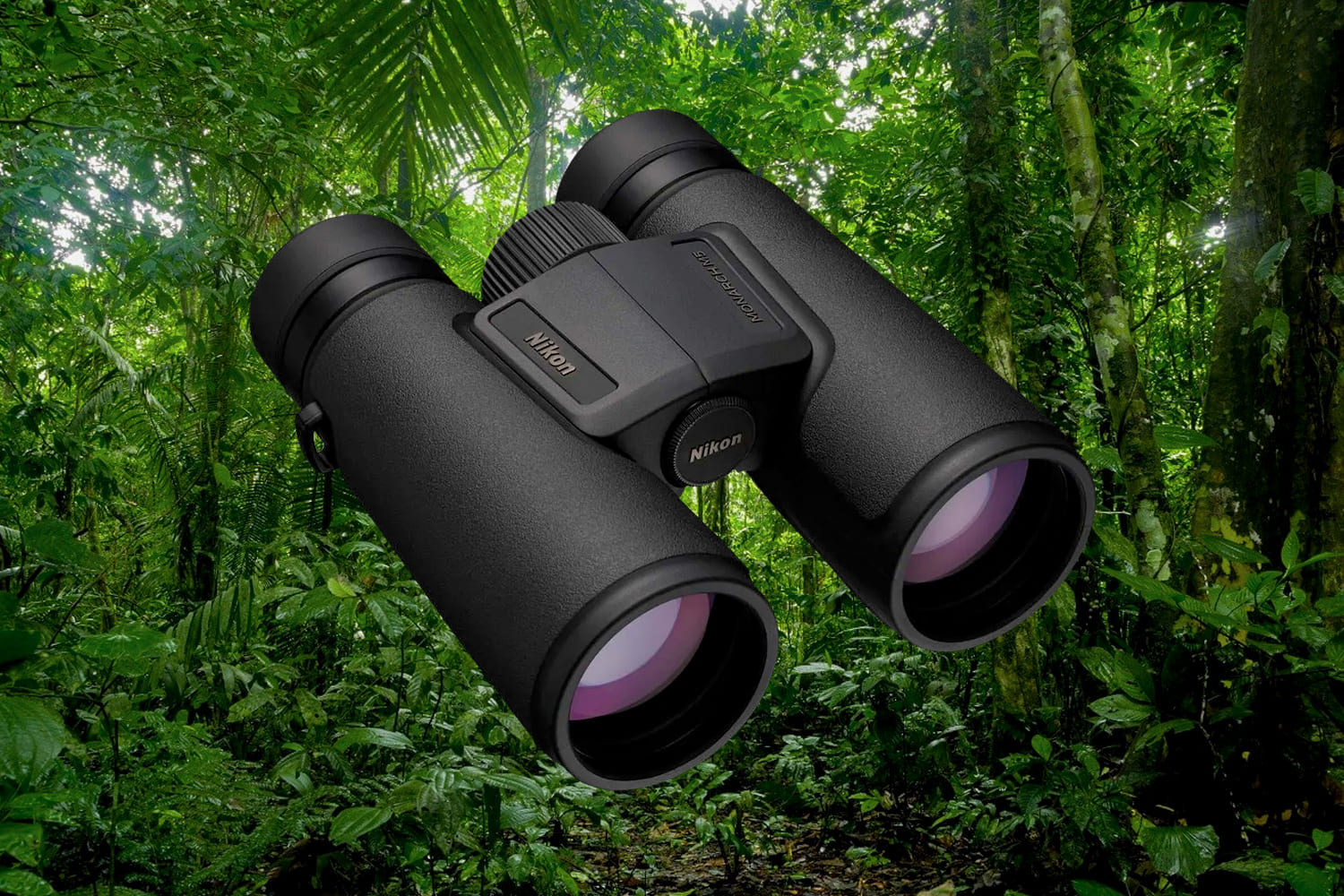
Vanguard binoculars are a reference among birdwatchers and nature observers. If what you are looking for is maximum power in binoculars without sacrificing weight, this is the model you are looking for.
• Magnification: 10x
• Lens diameter: 42 mm
• Field of view: 6.5º (114 m/1000 m)
• Minimum focusing distance: 2 m
• Exit pupil: 4.2 mm
• Eye relief: 18.5 mm
• Prisms and treatment: BaK-4. Multi-coated optics.
• Body: magnesium with non-slip coating, nitrogen filled and waterproof
• Weight: 770g
• Length x width x height: 15.4 x 13 x 5.2 cm
• Extras: Neck strap, zipper case, lens caps
Strengths:
– Japanese low dispersion optics.
– Great eye relief (18.5 mm).
– Wide field of vision (114 mm).
– Lockable diopter adjustment.
Weak point:
– Multi-coated (not fully).
– Heavy (770).
– Some chromatic aberration despite its ED optics.

Leica users will find that the objects they see are incredibly sharp and the colors brilliant. Leica binoculars come with a unique Adventure-Strap carrying system, which holds the binoculars securely to your body while hiking.
• Durability: Water resistant, fog proof
• Objective lens diameter: 42 mm
• Magnification: 10x
• Lens coating: Fully multi-coated
• Close focus: 5.3 feet
• Field of view: 355 feet at 1000 yards
• Prism type: Compact Bak4 Roof Prism
• Eye relief: 15.5 mm
• Weight: 1.6 pounds
Strengths:
– Sharp and vibrant images.
– Waterproof and fogproof.
– Large field of view at 10x.
Weakness: The Adventure-Strap takes some getting used to.
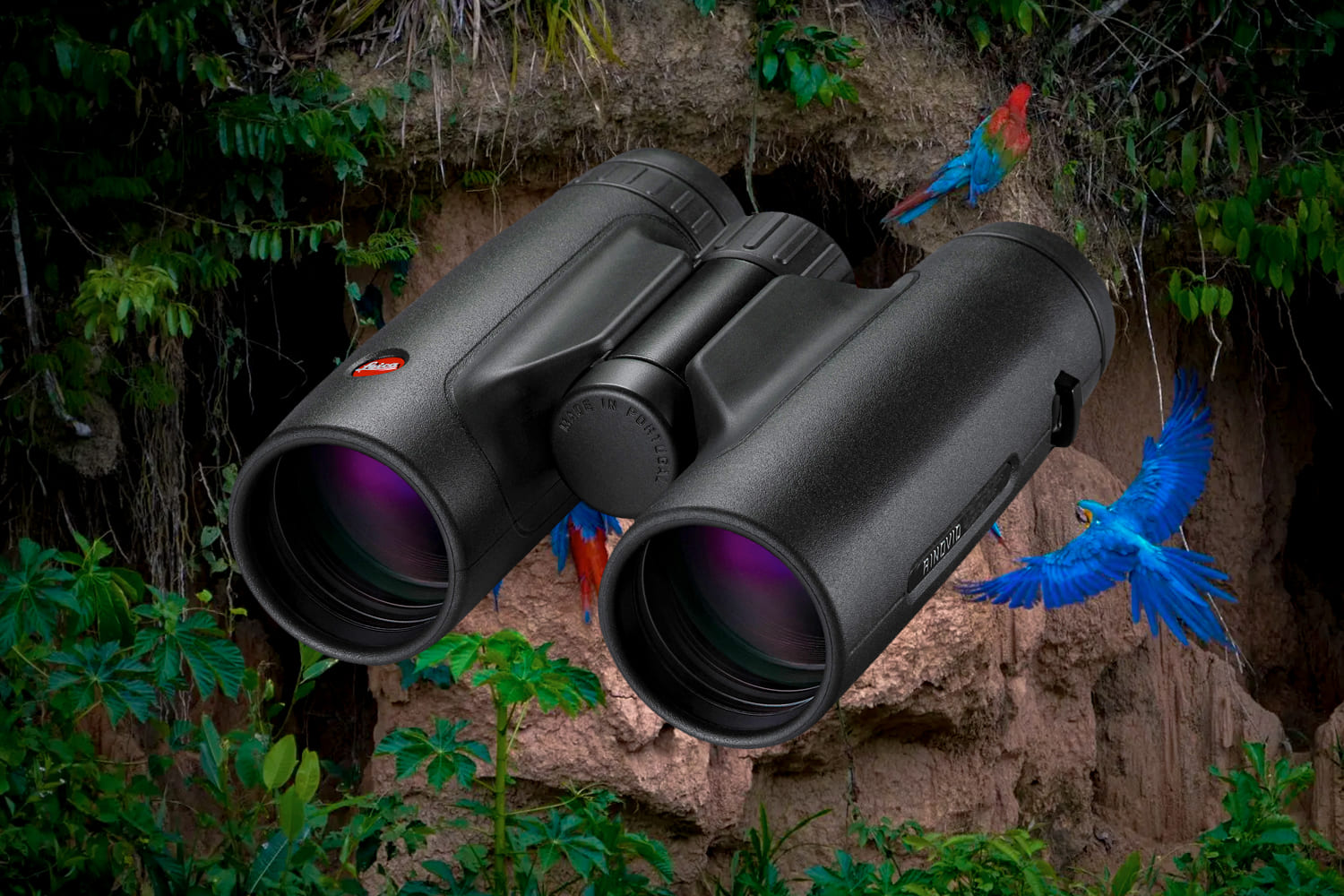
Another option when looking for the best binoculars for bird watching is this pair that provides professional qualities. The binoculars offer 20mm eye relief to help improve eye comfort. This is important during long viewing sessions.
• Durability: Basic rugged design
• Objective lens diameter: 42 mm
• Magnification: 8x Covering
• lens: Multi-coating
• Close focus: n/a
• Field of view: 61 degrees
• Prism type: n/a
• Eye distance: 20 mm
• Weight: 4.24 pounds
Strengths:
– Exit pupil diameter of 9 mm.
– Comes with lifting carrying strap.
Weak point: Protective case not included.
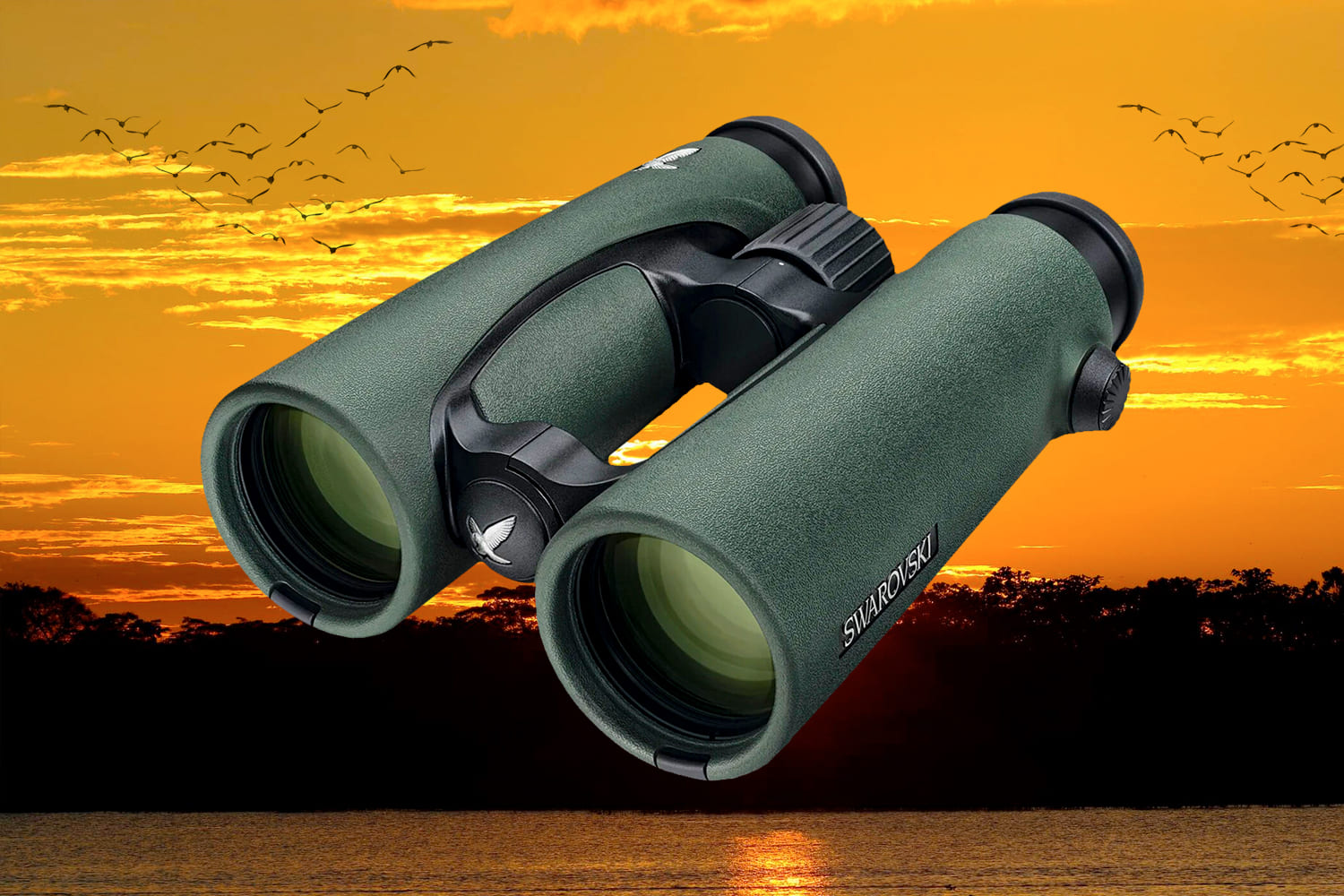
The Nikon Monarch is a great balance between value and the quality you get. The first thing bird watchers will notice is the image quality. These binoculars use extra-low dispersion glass, projecting sharp images and vivid colors. The most impressive thing about these binoculars is how they perform in low light situations. Monarch maintains bright images despite less than ideal lighting conditions.
• Durability: Water resistant, fog proof
• Objective lens diameter: 42 mm
• Magnification: 8x Covering
• Lens: Dielectric High-reflective multi-layer coating
• Close focus: 2.4 m
• Field of view: 351 ft at 1000 m
• Prism type: Coated roof prism with phase correction
• Eye relief: 17.1 mm
• Weight: 1.4 pounds
Strengths:
– One of the largest fields of view available (which is why it is best for bird watching).
– Bright images even in low light.
– Sharp images and exceptional contrast.
– Waterproof and fog proof.
– Ideal for glasses wearers (17.1 mm long eye relief).
– Lightweight for a binocular with a 42mm objective.
– No shaking, easy to hold for longer.
Weak point:
– Sometimes the lens caps do not fit properly.
– Questionable light chromatic aberration.
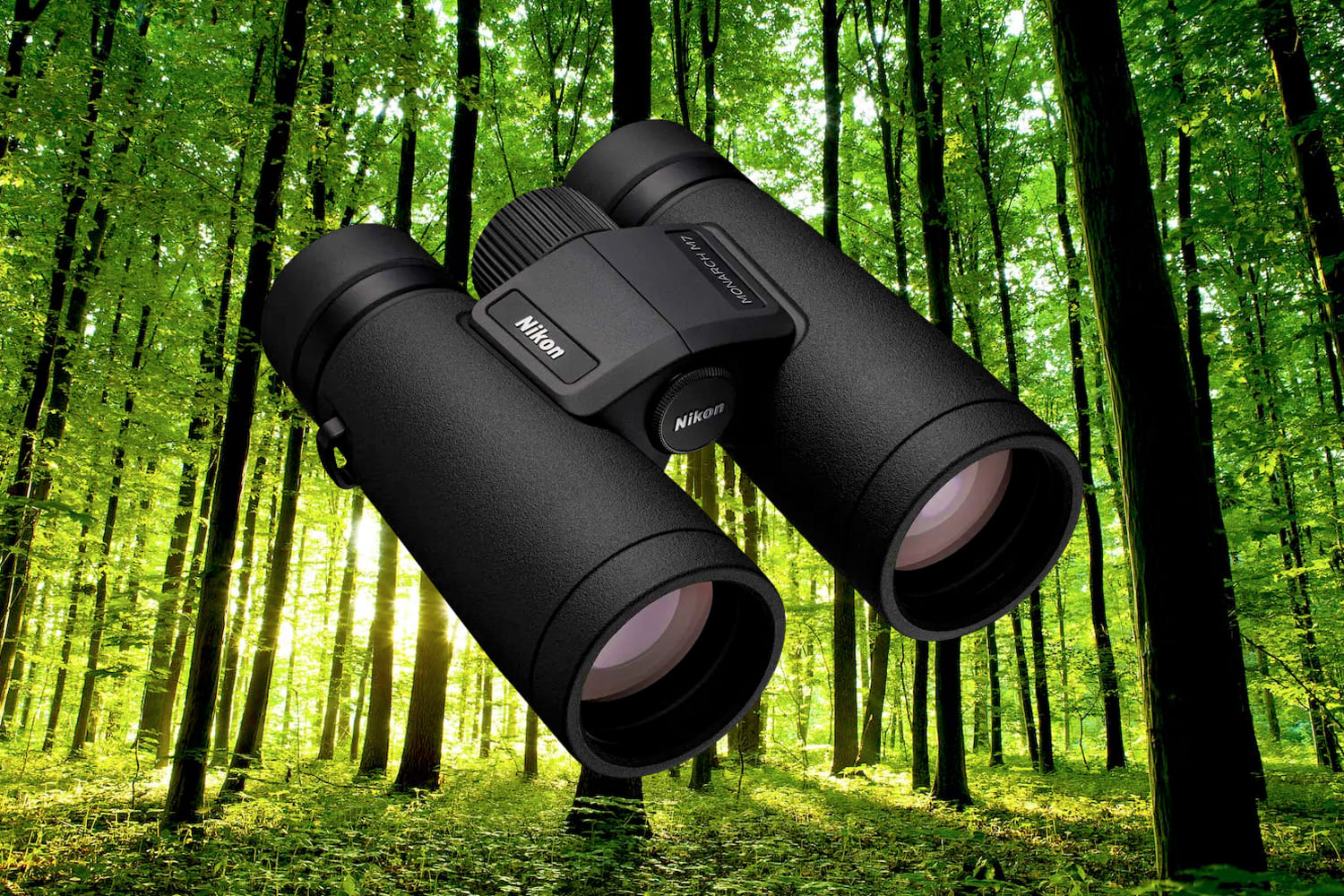
A good option when looking for binoculars for bird watching are the ZEISS Conquest HD binoculars. These binoculars feature premium construction and were developed with optical perfection in mind. It is one of the most expensive options available at the moment, but it offers superior performance compared to alternatives on the market. In optics, you get what you pay for.
• Durability: Moisture resistant
• Objective lens diameter: 32 mm
• Magnification: 8x
• Lens coating: T Premium
• Close focus: n/a
• Field of view: n/a
• Prism type: n/a
• Eye relief : n/a
• Weight: 1.39 lbs
Strengths:
– Super sharp, bright images help you see the details of small birds.
– Very good performance in low light.
– Quick focus knob (quickly find and focus on a moving bird).
– Comfortable design with secure grip (you won’t drop them).
– Ideal for glasses wearers.
Weak point:
-Lens covers could be better (a common problem with all brands).
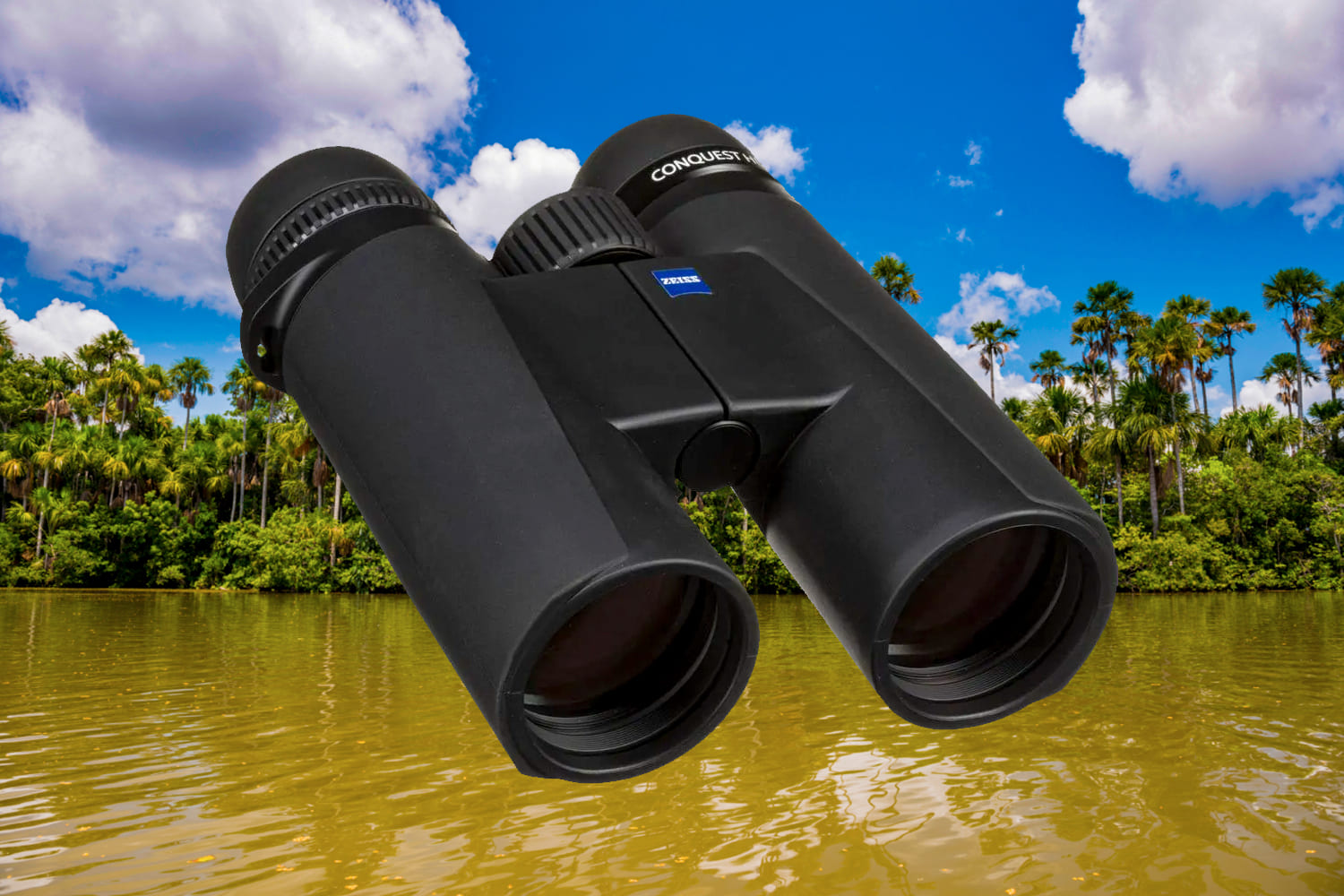
The Celestron Trailseeker ED 10×42 binoculars come with a high level of magnification that provides up to 10x zoom function. Comes with 42mm lenses for superior performance. The lens elements use an extra-low dispersion glass objective. These elements provide better light exposure for better quality and clarity of your vision. These are also the best value binoculars for professionals due to the armored body and industrial-grade design, combined with a competitive price. The chassis is completely waterproof, this means you can use the binoculars in the rain and there is no need to worry if it falls into the water.
• Durability: Water resistant
• Objective lens diameter: 42 mm
• Magnification: 10x
• Lens coating: ED
• Close focus: n/a
• Field of view: n/a
• Prism type: BaK-4
• Eye relief : n/a
• Weight: 1.47 pounds
Strong points: Armored body, waterproof chassis, adjustable eyepieces, ED LED elements.
Weak point: The tripod adapter has an additional cost.
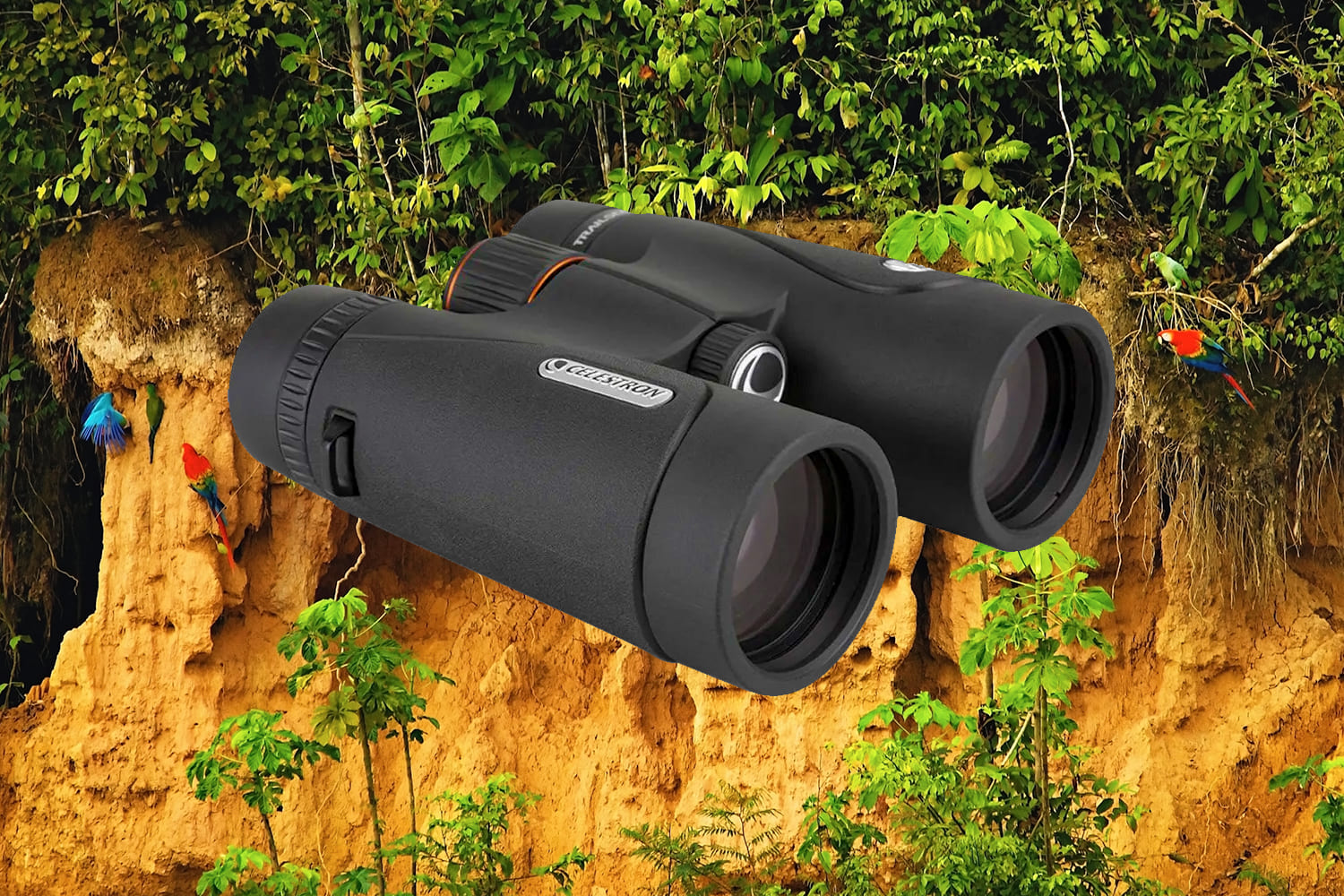

Visit the beautiful Amazon jungle of Tambopata in South America and enjoy the most impressive natural spectacle, we are referring to the blue and yellow macaw clay lick. Accompanied by the best local guides.

Your luxury trip to Peru includes a selection of Andean and Amazonian landscapes. We will help you to explore this welcoming and varied country, planning each step of your trip, with the best services. With the help of amazing expert guides, you can enjoy all that Peru has to offer, every detail is well taken care of.


The Manu Jungle tour goes to one of the largest life biosphere reserves in the World. You will enjoy wildlife, traditional villages, with the best specialized guides.
